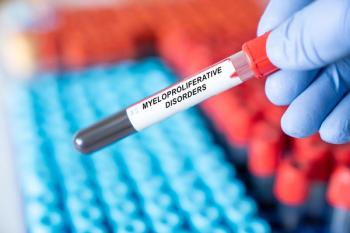
Thymectomy in Children With Myasthenia Gravis: An Option to Consider
Results of a recent database analysis reveal that patients with juvenile myasthenia gravis—particularly prepubescent girls—might benefit from early thymectomy to cut production of autoreactive AChR B cells. Usually, though, it’s not done.
Among the results of a recent study about juvenile
The team’s central goal was to better characterize JMG, to better understand the disease’s underlying etiological mechanisms and, hopefully, help improve patients’ quality of life. They analyzed 85 pre- and 132 postpubescent patients with JMG, comparing them with 721 adults with MG aged 40 years and younger.
The rationale for examining pre- and postpubescent JMG separately is that pubertal changes can favor the
They investigated 40 years’ worth of clinical data, anti-acetylcholine receptor (AChR) antibody titers, thymectomy, and thymic histology, and completed a comprehensive literature review as well.
When specifically comparing prepubescent with postpubescent JMG, they found that the risk of developing MG was lower in the prepubescent group. However, they observed no significant differences between the 2 groups in the female-to-male ratios; the percentages of patients in the JMG and adult MG groups who had anti-AChR titers and were positive for AChR were similar as well.
Postpubescent individuals with JMG have a higher degree of follicular hyperplasia, they found, and specifically, postpubescent females with JMG had the highest rates of lymphofollicular hyperplasia and highest germinal center (GC) grades. This is “probably exacerbated by high levels of feminine sexual hormones…[because]…statistically significant findings [suggest] a higher susceptibility of females to develop follicular thymic hyperplasia just after puberty,” noted the team.
Autoreactive AChR B cells emerge from the thymus, which plays an active role in their production, they continued. Further, the degree of follicular hyperplasia and the quantity of anti-AChR titer were seen to be correlated in JMG, and, across patient categories, anti-AChR antibodies and GC grade were positively correlated.
Early removal of the thymus could decrease the dispersion of autoreactive AChR B cells in the periphery. So, potentially, thymectomy before puberty would benefit patients with JMG, especially for girls and especially if performed early in the disease course.
The data revealed, though, that the percentage of prepubescent patients who had undergone thymectomy was significantly lower than in other subgroups: 32.9% vs. 42.5%. The delay to thymectomy was also twice as long in the prepubescent group.
The authors’ literature review uncovered as well that in adult patients with MG, the number of GCs correlates with better postthymectomy outcomes, and that there is an inverse correlation between age at thymectomy and the prevalence of GCs in adult patients.
More Biological Details
Sexual hormones play a crucial role in modulating the formation, function, and maintenance of GCs within lymphoid tissues and in inflammatory conditions. “In GCs, the estrogen receptor α is expressed while the progesterone and androgen receptors are weakly or not expressed,” explained the authors. “The activation of the estrogen receptor α could favor the development of larger GCs.”
In contrast, they continued, higher serum androgen levels seemingly inhibit the development of thymic GCs in patients with MG. And, via their interactions with immune cells and cytokines, sexual hormones influence the processes of B-cell activation, antibody production, and affinity maturation in pathological situations.
In an inflammatory environment such as that observed in the thymus of a patient with MG, “estrogens provide continuous support for the activation of interferon-signaling pathways, thereby augmenting the progression of GC formation,” they wrote.
References
1. Truffault F, Auger L, Dragin N, et al. Comparison of juvenile and adult myasthenia gravis in a French cohort with focus on thymic histology. Sci Rep. 2024;14(1):13955. doi:10.1038/s41598-024-63162-0
2. Yang Q, Kennicott K, Zhu R, et al. Sex hormone influence on female-biased autoimmune diseases hints at puberty as an important factor in pathogenesis. Front Pediatr. 2023;11:1051624. doi:10.3389/fped.2023.1051624
Newsletter
Stay ahead of policy, cost, and value—subscribe to AJMC for expert insights at the intersection of clinical care and health economics.













































